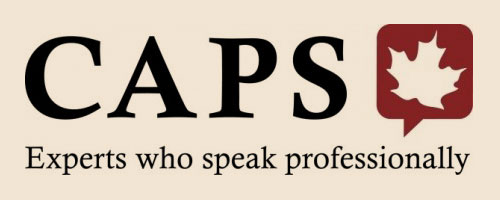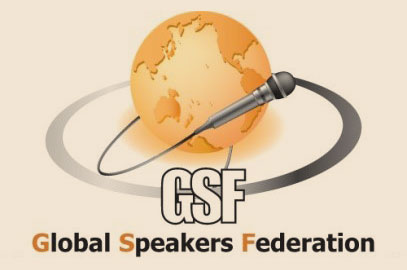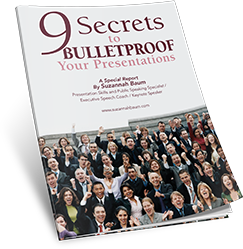Speaking at a Podium While Reading Notes: Is it a Recipe for Disaster…Or another way to Rock Your Presentation?
Standing at a podium and reading your script has the potential to create a boring, unengaging, and frustratingly long experience for your audience. Here’s how to make sure that doesn’t happen when you’re the speaker.
If you’ve ever sat through a presentation where the speaker stands at a podium reading their notes, you know that there’s a huge potential for it to be a boring, unengaging, and sometimes frustratingly long experience for the audience.

So should you use the podium? Sure! But…
It depends on HOW you use the podium (yes, there’s always a “BUT”). Because HOW you use the podium will be the difference between a bored, unengaged, frustrated audience….and an audience that has just had a meaningful, valuable experience – because of YOU!
HOW you use the podium will be the difference between a bored, unengaged, frustrated audience….and an audience that has just had a meaningful, valuable experience – because of YOU! Share on XHere’s the problem. All too often, when a speaker is standing at a podium and reading a speech, they may do so in a rushed, disinterested or monotonous voice, barely looking up at the audience, and fidgeting their way through the entirety of their speech. Hands may tap on the podium, legs may dance around, and any show of emotion can be nonexistent. On top of that, reading your notes can bring your energy – and the energy of the room – down, because you’re not making eye contact, and therefore, not connecting with your audience.
If you’ve got a presentation coming up where you know that you’ll be speaking at a podium and using your notes, you’ve got to balance your desire to present your content in a way that’s comfortable for you, with the need to keep your audience engaged, interested, and connected with you and your topic.
With that in mind, here are 8 essential elements to remember when you’re going to speak from a podium using notes – and still create a meaningful and engaging experience for your audience:
- IMPACT words: Go through your script and pull out the words that you want to emphasize for impact. If you read your speech out loud – which you should certainly make the time to do before the big day – take note of which words or phrases require extra impact. This has the dual benefit of working as a ‘monotone avoidance mechanism’, ensuring that you modulate your voice and keep it more conversational, AND will highlight important points for the audience’s benefit. Consider putting these words in Bold or ALL CAPS, so that they’re easy for you to see on your script.
- Know exactly when you need to look up at your audience. Look at your audience when you say “you” or “we”, when discussing a shared vision, telling a story, and during your introduction and conclusion, and you’ll have a better chance of connecting, and staying connected, with them. Consider circling these words in your script, or creating another scripting cue that will remind you to look up from your script.
- Be aware of your speaking speed. Don’t speak too quickly. If people miss too many of your words, they’ll stop listening to you altogether.
- Authenticity, Enunciation, Pausing….and Repeat. If you’re speaking quickly because you’re excited, or because that’s your speaking style, that’s fine. However, you must ensure that you enunciate your words, don’t let them trail off at the end of sentences, and pause more often when you make new points and between transitions. This allows your audience the time to ‘digest’ what you’re saying – and actually understand what you’re saying.
- Voice modulation. Try to avoid a monotone voice, which is so easy – and so common – when reading your notes. Vary the speed, pitch and volume at which you speak, so as to keep the speech more interesting to listen to. Your audience will respond better to your content if you present it in a more conversational tone, with more interest and excitement in your voice.
- Smile. Are you happy to be there? Does it even matter? When you’re on stage, you’ve got to make the effort to look like you appreciate the opportunity to speak to the audience. Try to avoid “serious resting face” that is sometimes [unknowingly] exhibited when you feel nervous.
- Body language “DO’s”: Stand straight, both feet on the ground in a parallel position. Keep both feet behind the podium. Watch your posture. And this bears repeating: Don’t read your entire speech, look up at your audience often, make eye contact with people throughout the whole room, and not just those closest to – or smiling at – you.
- Body language DON’T’s: Do not: Bend your knee back and forth; Lean on your hip, sway side-to-side, or shift back and forth; Lean back on your heel (so that the audience can see the bottom of your shoe); lean on your elbow; tap your fingers on the podium; let your foot stick out the side of the podium; tap your foot on the ground; cross your legs; stretch your arms out over the podium to hold the farthest end of it; hunch your shoulders.

As a speaker, are you aware of just how much impact you have on the audience? (hint: your speech can make it or break it).
A presentation is about much more than getting up on stage, giving your speech, and “getting it done.” As a speaker, you have the opportunity to educate, inspire and persuade your audience, and create amazing results. So even if you’re going to be speaking at a podium and relying on your notes to get through it — remember that it’s not only about WHAT you say, but HOW you say it. Make the most of your time in front of your audience, because this time is crucial to the success of your presentation – and to the value that you can pass onto your audience.




